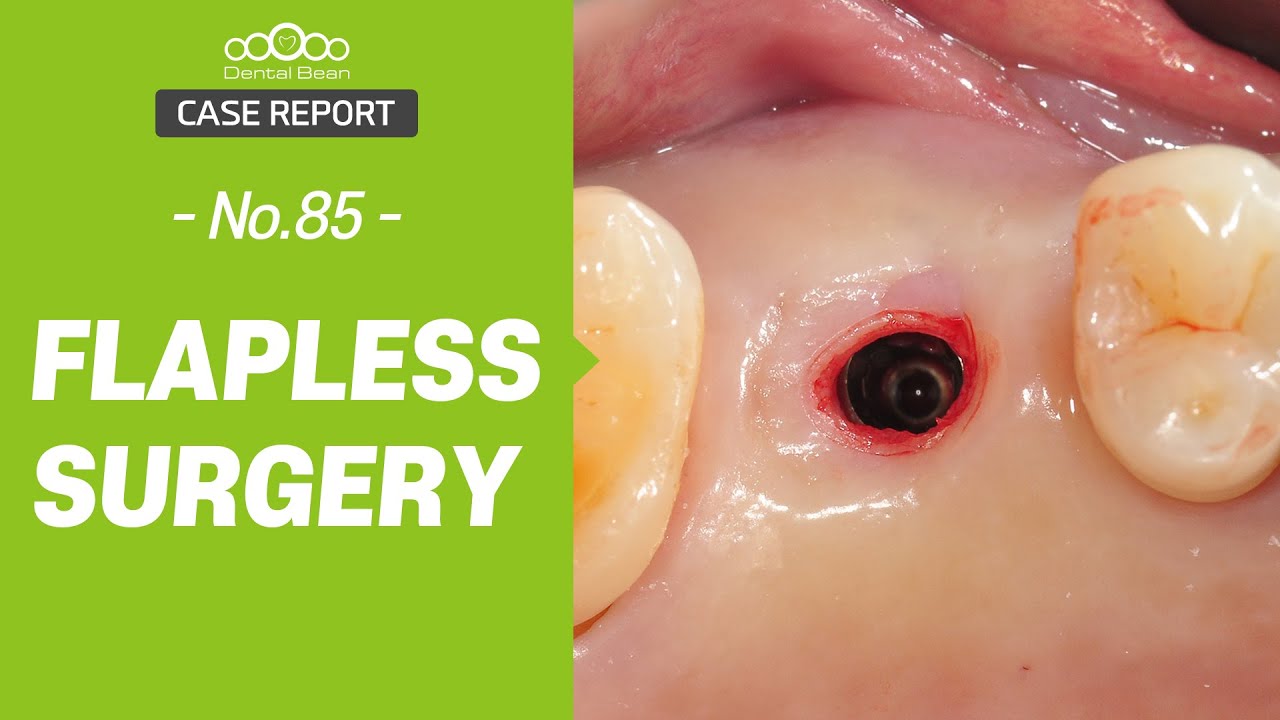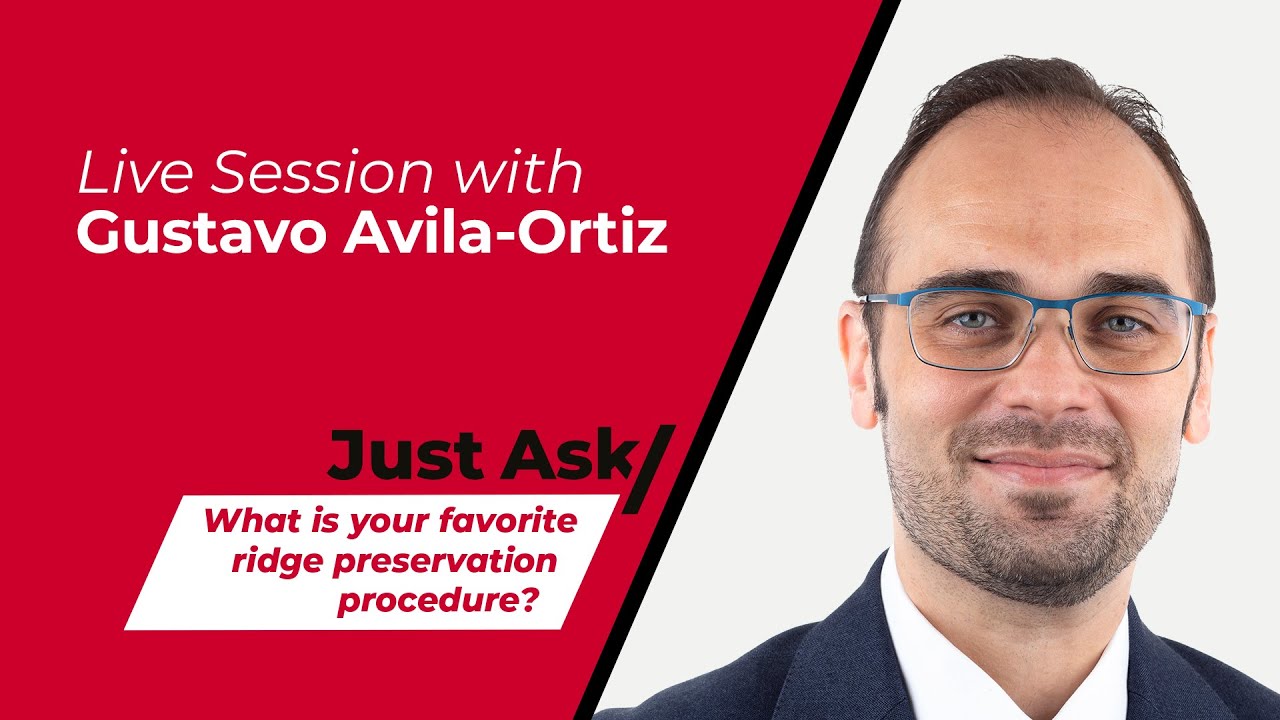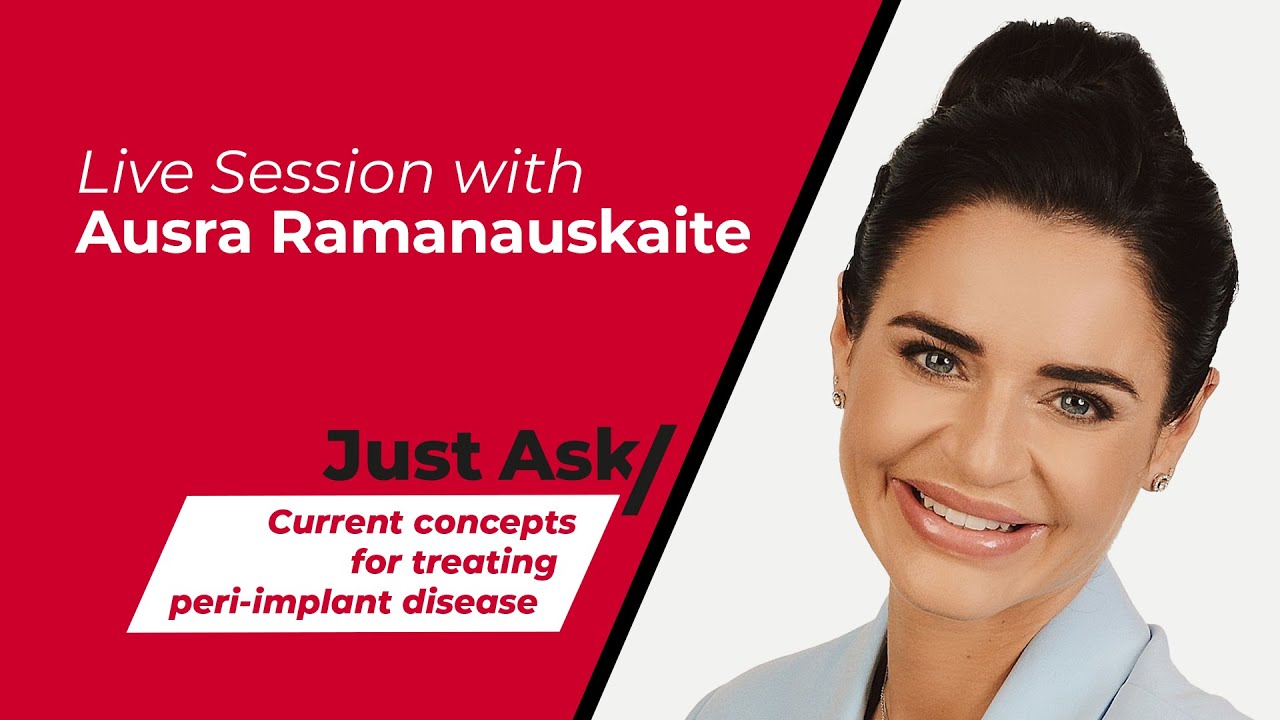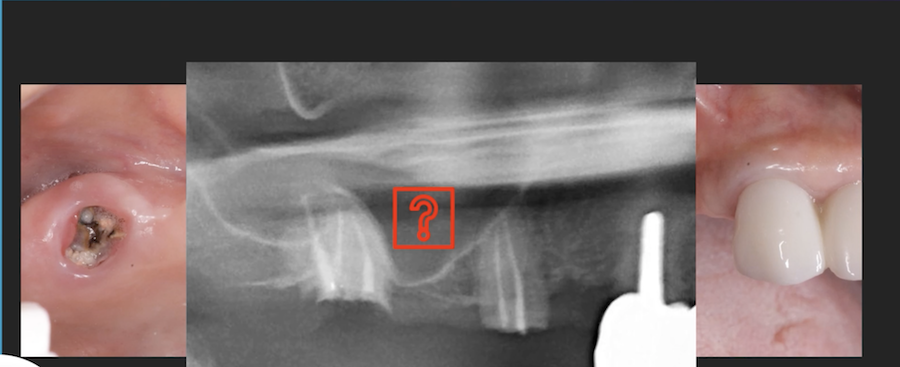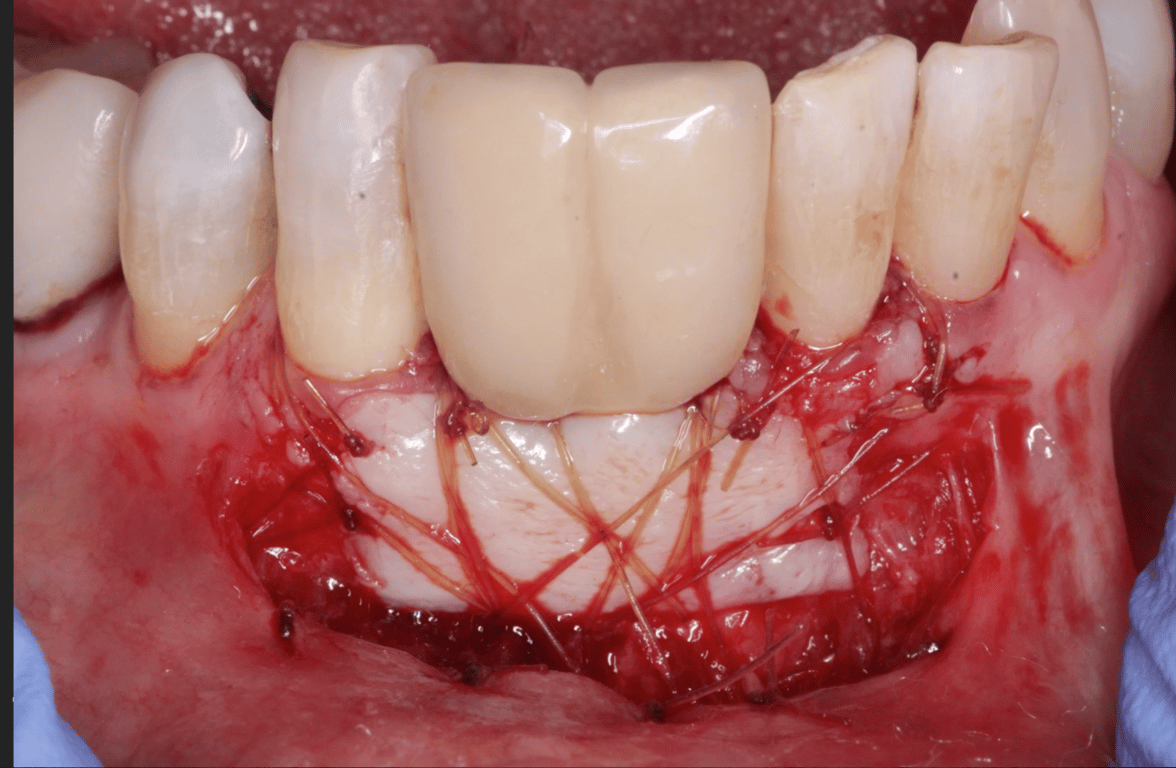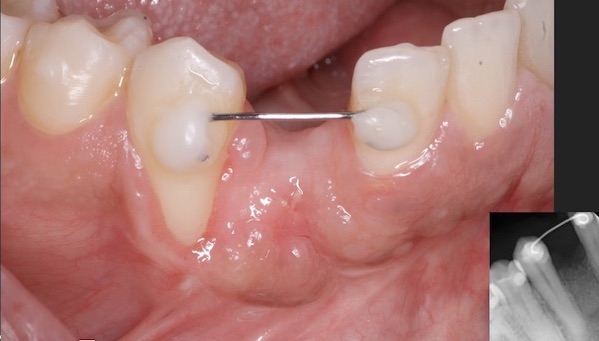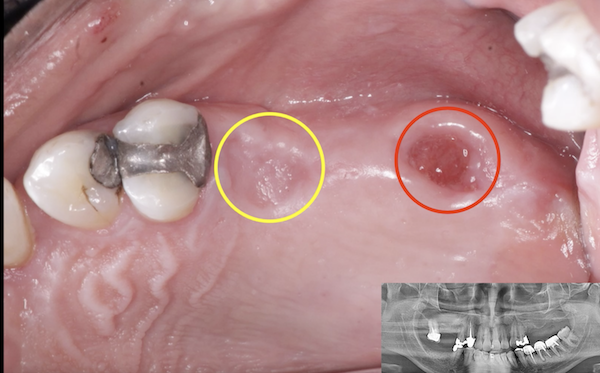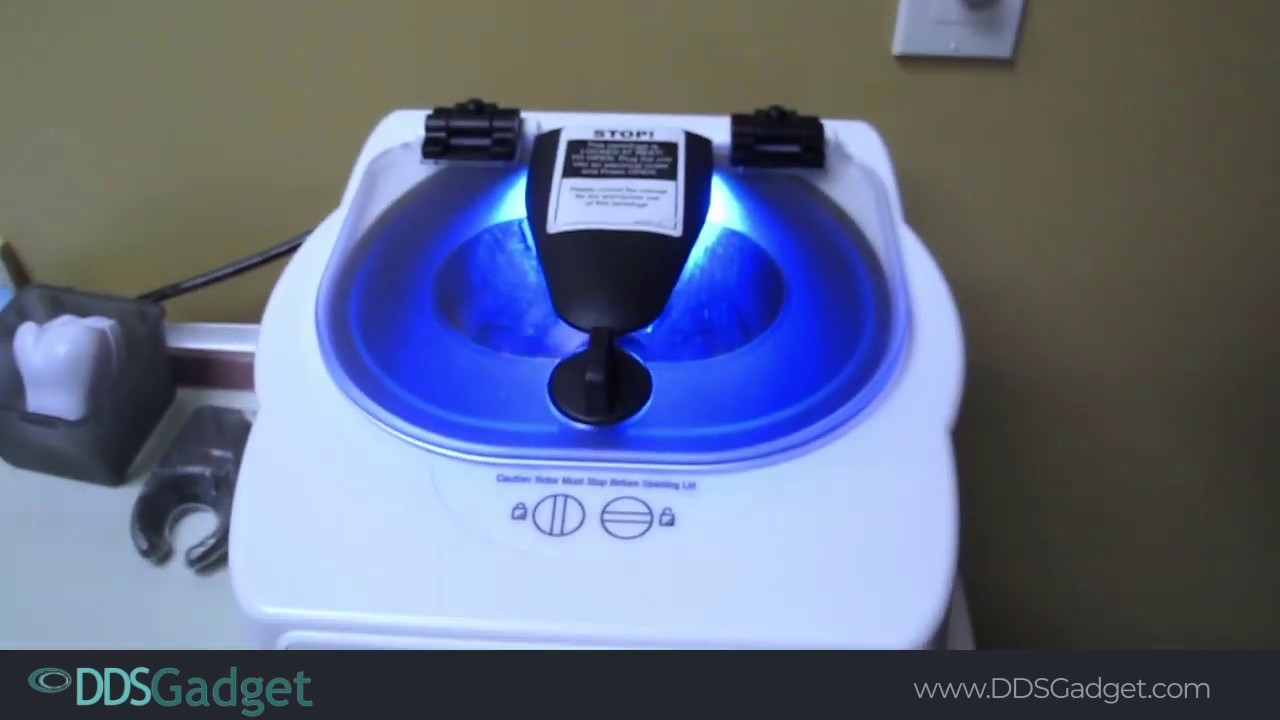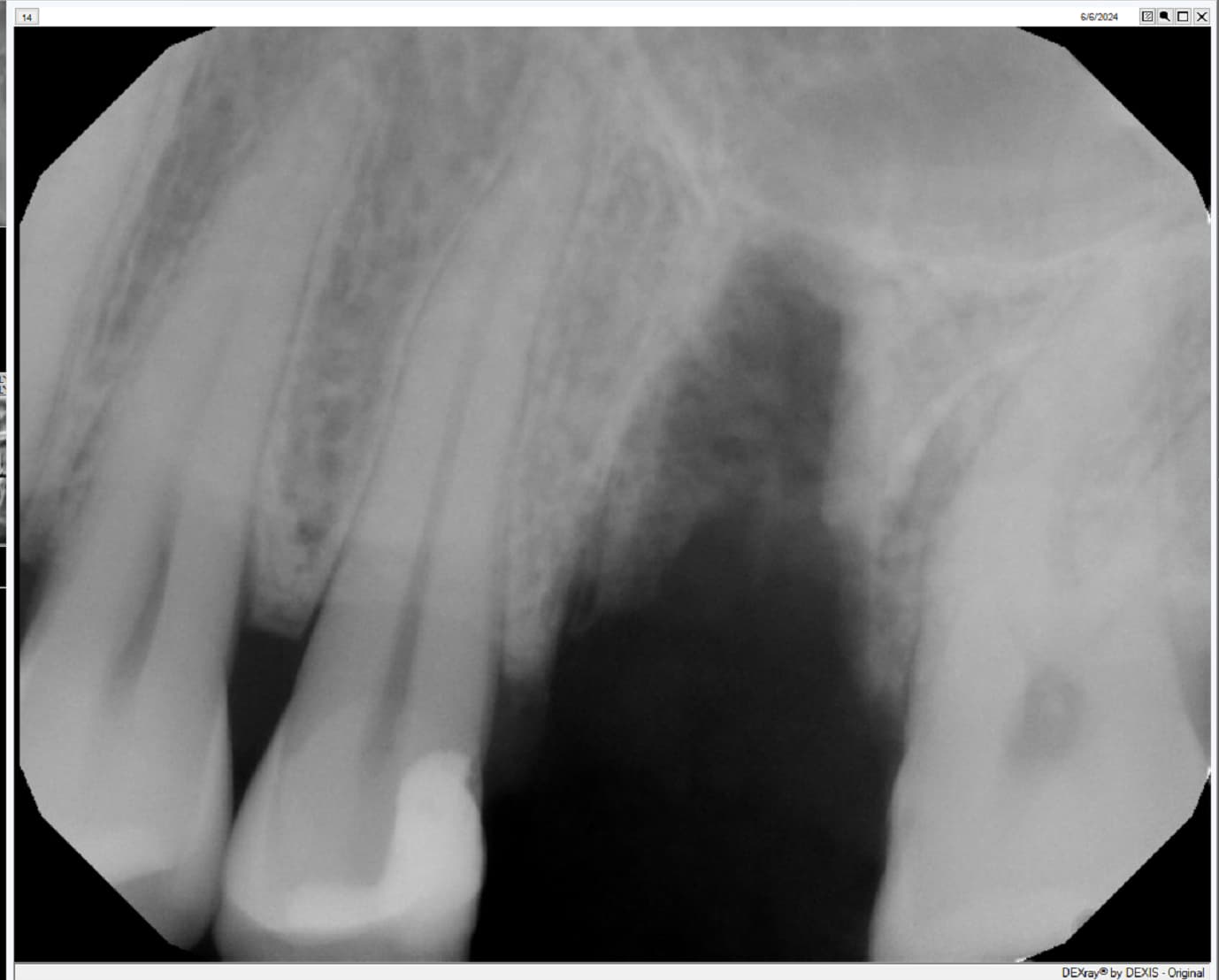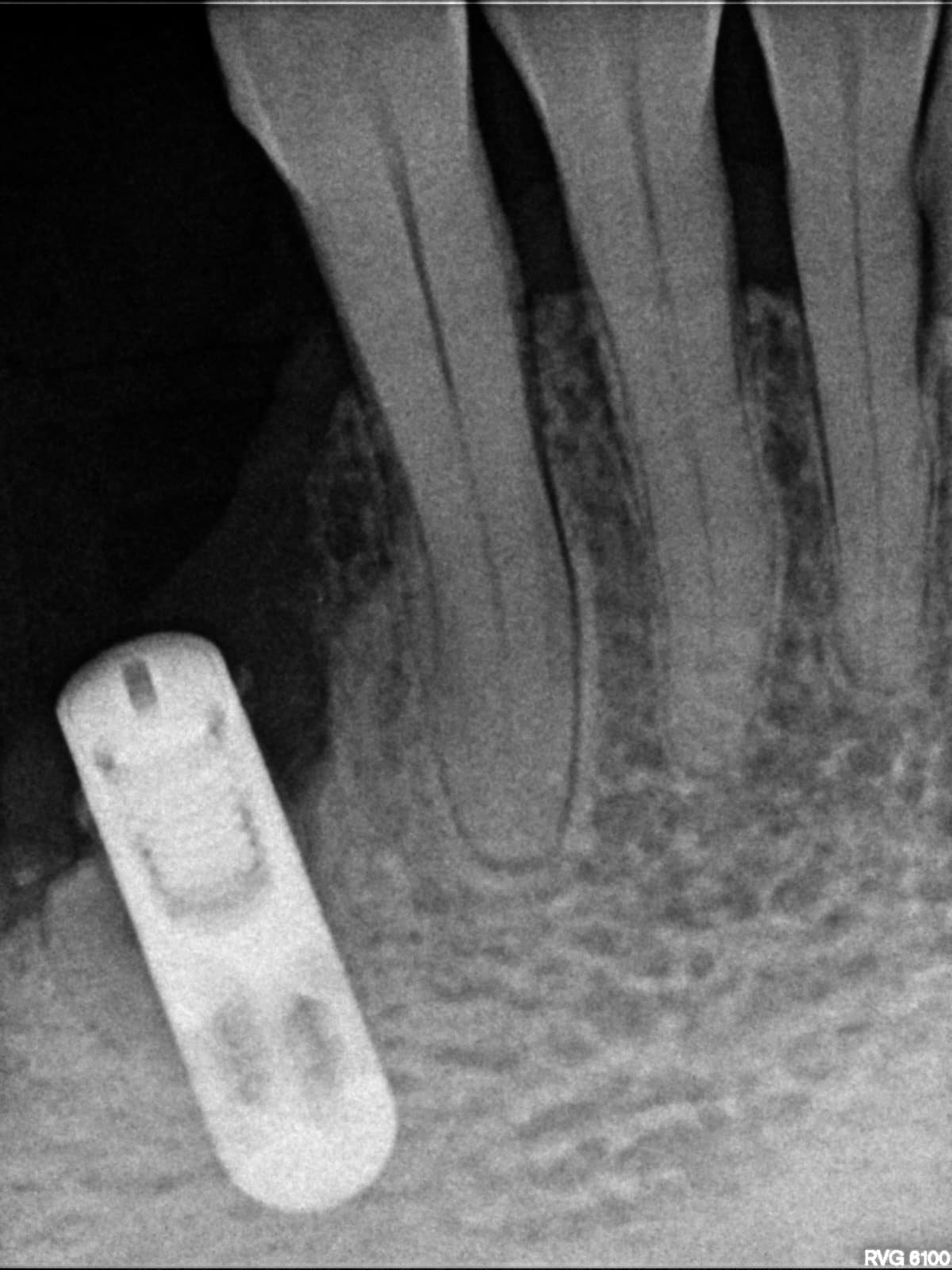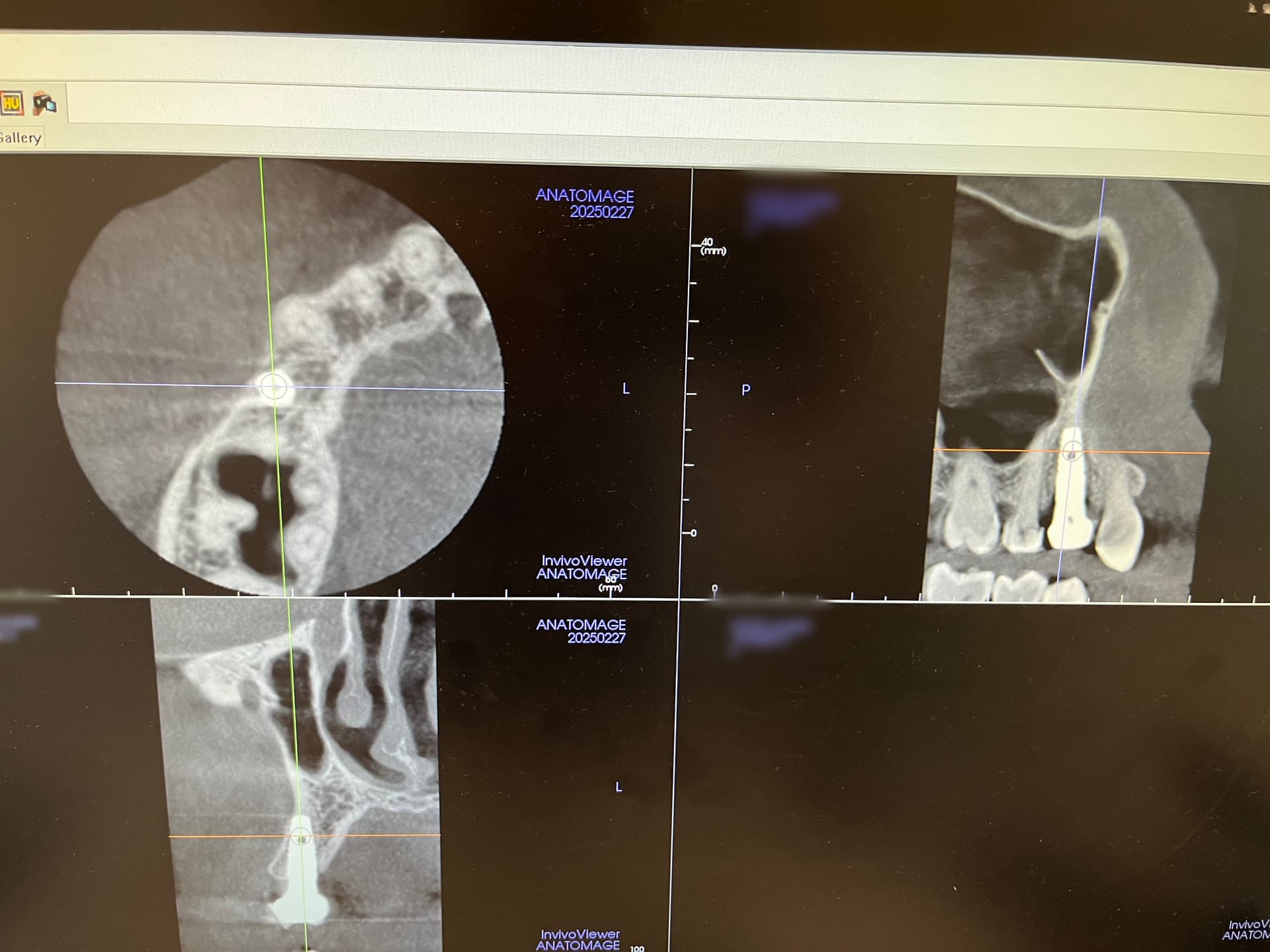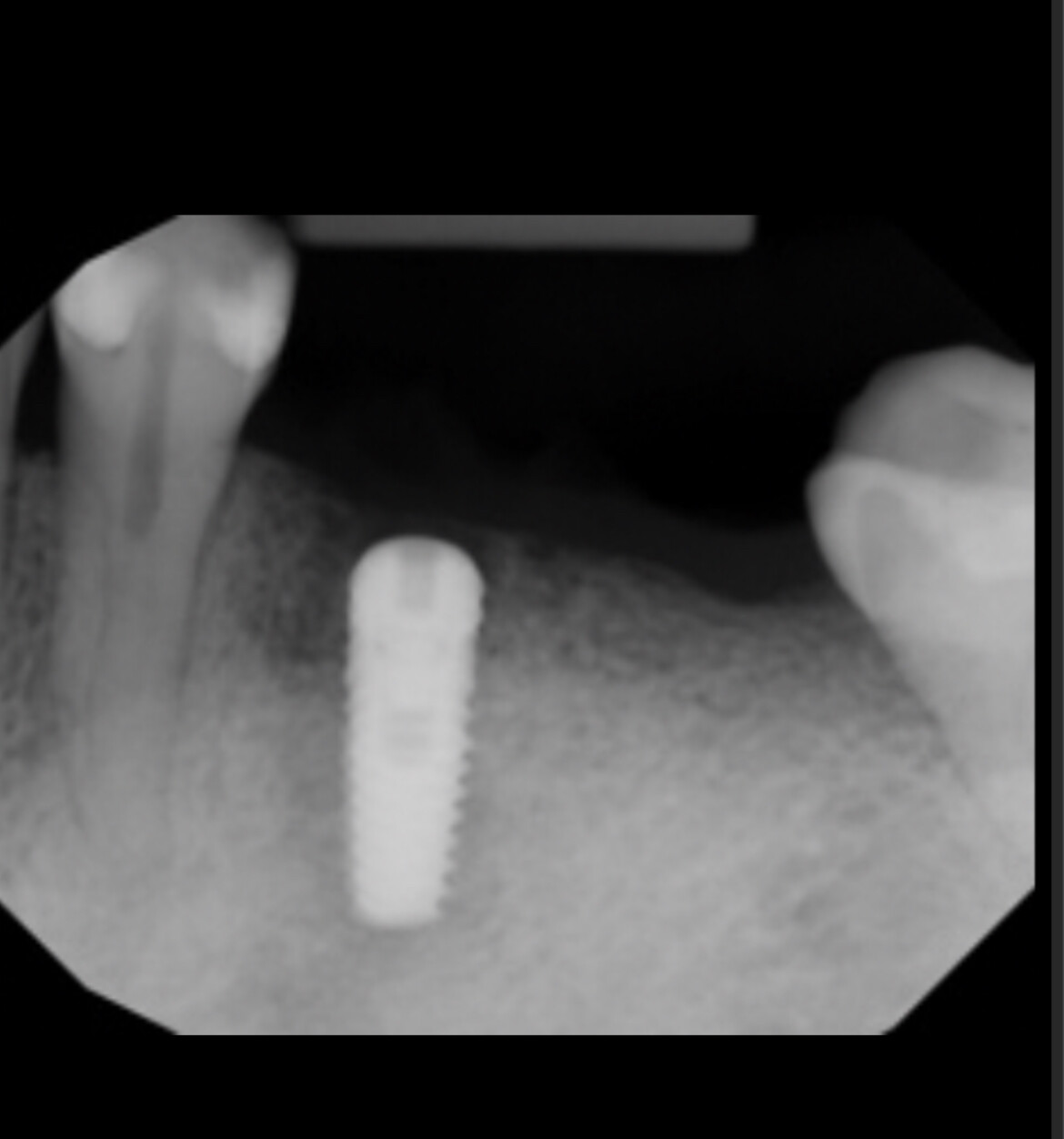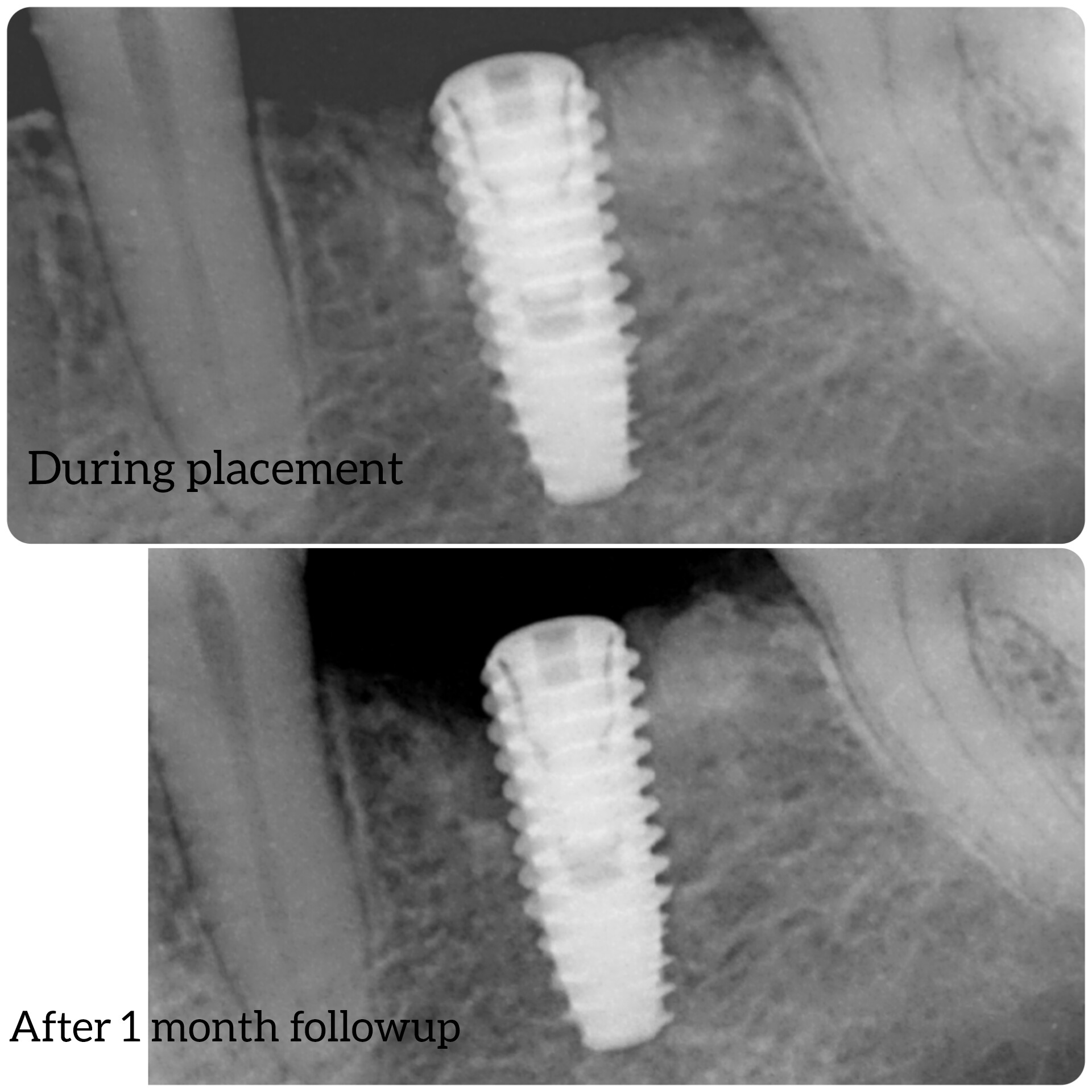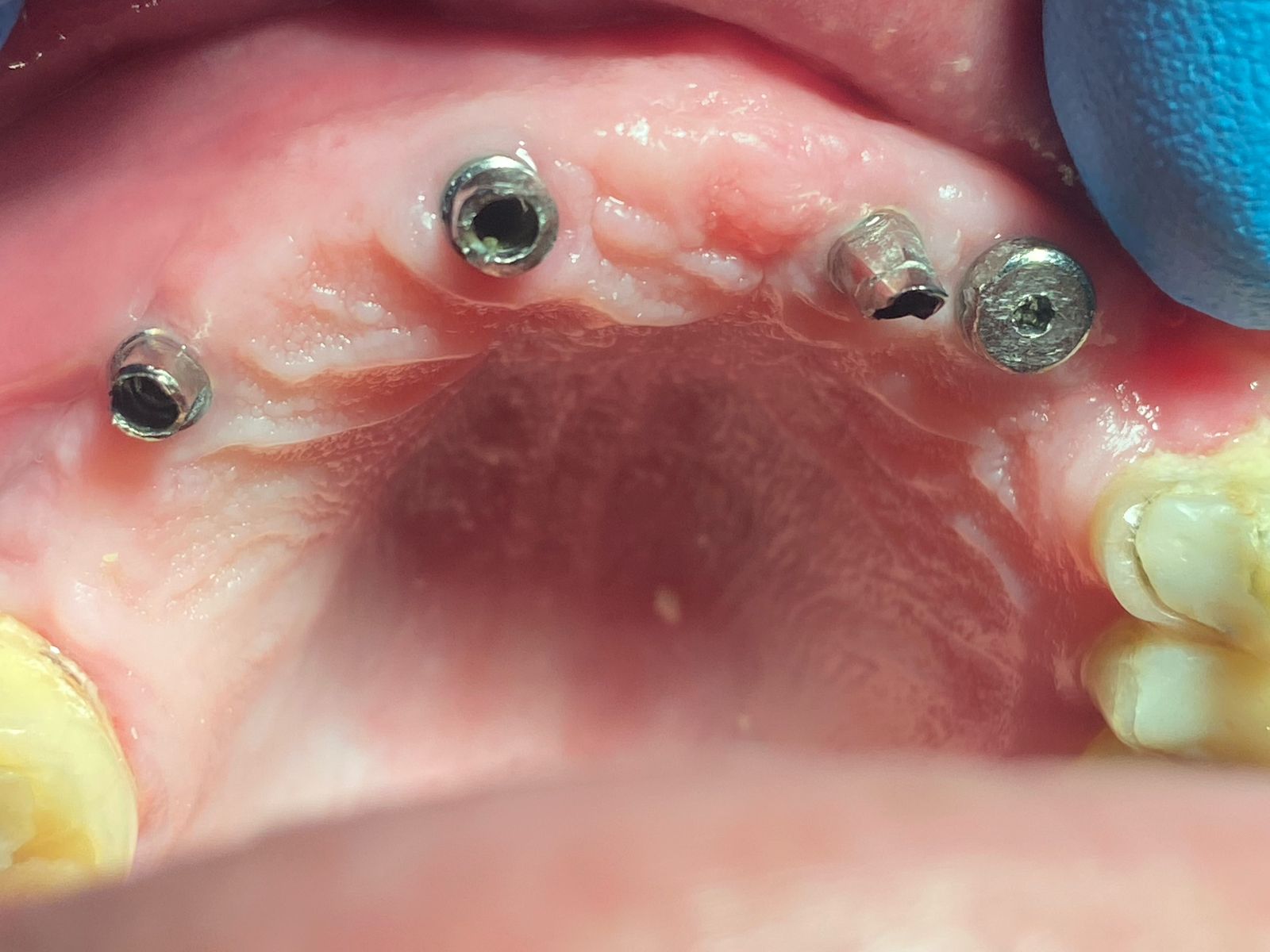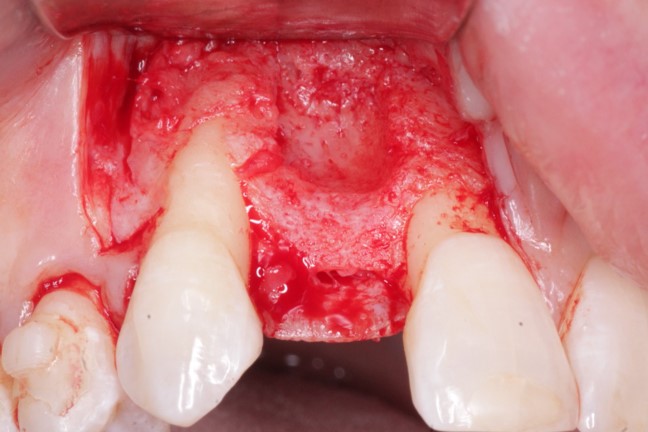Parallel Walled Cylinder Implants vs. Tapered Implants: Differences?
Dr. C asks:
As a general principle, is there any difference in the ability to establish primary stability between parallel walled cylinder dental implants vs tapered implants? Are there specific indications for when to use cylinder implants versus tapered implants? Contraindications? Which has the better chance of success?
23 Comments on Parallel Walled Cylinder Implants vs. Tapered Implants: Differences?
New comments are currently closed for this post.
John Manuel DDS
6/7/2011
Dr. C
I think you will find there are more critical design variations than the outline shape. Finned implants have much more surface area to bone per length than do regular threaded designs. Many threaded designs have different cross sections of threads, and so on.
In general, if one is placing the longer implants, 8mm and longer, a tapered tip will give you more placement options in crowded or narrow situations.
Each system has evolved over time, and a close study of each manufacturer's wares will likely reveal special variations for implants to be placed in unique situations. e.g., the Bicon 5.0 x 6.0 has a special, wider, slotted fin designed to engage the bony supporting ridges of the posterior mandible.
John
The Truth
6/7/2011
Technically, all implants are tapered
Peter Mayer DDS MD
6/7/2011
Dr. C
I find the differences noticable depending on bone type. I usually prefer a tapered implant. I believe I get better stability in softer bone (posterior maxilla for example). In fact, I will often under drill and rely on the wedging effect to gain more stability. Hard bone is the opposite. I tend to use straights in really dense bone. You will find that the wedging effect in heavier bone Is tough to deal with. You'll go back and forth drilling and tapping trying to get your implant platform where you want it. Good luck.
Pete
lyle
6/7/2011
I do not believe the shape of the implant makes that much of a difference. However the thread design makes a huge difference especially in soft bone. Fixtures like Ankylos or Nobel Active have ncuh better stability in soft bone than 3i.
Dr. P.P.
6/7/2011
As a general rule tapered implants work better on soft bone and paralel wall implants do it better in hard bone. Undersizing the osteotomy may be useful when placing parallel wall implants in soft bone. Never undersize with tapered implants.
Hope this will help.
Dr. P.P.
DocOctagon
10/31/2020
After placing about 5000 tapered implants over 12 years, I have say, drilling can be undersized for tapered implants in many cases
dr.danesh
6/7/2011
Dear colleague;
As a rull it is a case to case basis.
Placing implants in dense D1 bone such as ant. of mandible, the best is to place parallel cylinder implants, to avoid over compression of the dense bone causing impairment of blood supply, w/c causes implant failure.
On the other hand , it is advisable to place conical tapered implants in the soft bone such as D4(posterior maxilla) , w/ under drilling, gives you the best primary stability.
Furthermore in fresh sockets, conical (root shape) implants is the choice.
In D3 & D4 , it is yor choice to place conical or cylinder type of implants.
I HOPE IT HELPS, AND GOOD LUCK.
Eric Klein
6/7/2011
Dear Eds,
I just want to let you know what a great support network and forum this website is for sharing info about implants.
As a solo practioner just starting in implants its good to have somewhere to ask questions and see other peoples experiences.
It certainly makes me feel like I'm not 'flying solo'.
Keep up the good work.
Bruce GKnecht
6/7/2011
There are more advantages to tapered implants that straight ones. If you are infracturing the floor of the sinus and do not want the impant to be in the sinus, use a tapered implant. If you have a buccal concavity to the bucca or facial plate, use a tapered implant.If you are placing an impant in an extraction site, place a tapered implant. Th only advantage I see for a straight implant is that the drill bits that form the osteotomy do not heat up the bone as much. Most implants made to day are tapered. I would stay with teh tapered implant.
Dr Mario Marcone
6/7/2011
Dear colleague,
Primary stability - Tapered or parallel-walled ?
To answer the question about which implant design, tapered or parallel-walled, gives better primary stability ... the answer is ...
... they both have the potential to provide primary implant stability.
The literature is rich with evidence of this ... almost all scientifically relevant articles talk about primary stability after implant placement, and, this regards a large variety of implants.
Regarding the bone density, regarding the implant design, what's important is that the surgeon knows in advance the bone density, the anatomical intricacies of the surgical site, then, an implant design can be chosen and placed accordingly.
The lesson to learn is that one should not wait till the surgical site is opened in order to decide ... rather, with proper pre-surgical diagnostic study, including CT, which can provide much information, including bone density in Hounsefield units, something CBCT cannot do, it becomes a simple matter of following proper diagnostic and surgical and prosthetic and esthetic guidelines.
Best Wishes,
Mario Marcone,
Montreal, Canada
Carlos Boudet, DDS
6/7/2011
Dr. C
To answer your question of primary stability:
When you thread a straight walled implant to the final position, the coronal part of the osteotomy has already been loosened (worn, microfractured, etc...)by the preceeding implant threads, while in a tapered implant, the osteotomy is only engaged then. Furthermore, if you continue to turn a straight walled implant after it has bottomed out, you are more likely to strip the threads in the osteotomy even in soft bone while a tapered implant is more likely to tighten before it also strips.
In general, the tapered implant fits the anatomy better and is more versatile.
The only disadvantage I see is that you can put so much torque on some designs that you can actually get bone necrosis from the pressure and actually have an implant fail because of it.
Besides the excellent points that Bruce mentioned in his post, there is also the advantage of easier insertion in areas of limited access such as the posterior regions of the mouth, since the implant will usually go into the osteotomy about half its length before it starts engaging it, giving you more room for the required instrumentation.
Hope this helps, and good luck!
Perio
6/8/2011
To my colleagues who mentioned bone necrosis: What evidence in the literature do you base your comments on? At what NCm torque does one start to worry about necrosis? Has any of you experienced such a thing? Kindly share your thoughts.
Andreas B
6/8/2011
I do not want to enter into your discussion about bone density or primary stability. However I want to point out the importance of osteotomy creation!
1. Every implant system uses different diameters and tolerances for the same "basic" diameter. Whatever system you are using, NOT using the appropriated FINAL shaping instrument to create your osteotomy will lead into problems.
2. Consider the use of NEW cutting tools to create the final shaping. All drills undergo a certain wear and tear during use but more than this they "suffer" from inappropriate cleaning and handling. A damaged cutting edge leads into a reduced cutting ability - leads into more rotations to create the osteotomy - leads into more heat.
Dr. Dennis Nimchuk
6/8/2011
The answer to your question is that generally tapered implants offer a better opportunity to achieve primary stability but there is a great deal of difference amongst the type of macro design and the corresponding osteotomy designs employed
An implant’s ability to compress bone, for the most part, will be based on how the implant body form and diameter is matched to the osteotomy form and diameter. Three general combinations are available.
A.A parallel walled implant placed into a parallel walled osteotomy that is slightly undersized.
B.A tapering walled implant placed into a parallel walled osteotomy that is slightly undersized.
C.A tapering walled implant placed into a tapering walled osteotomy that is slightly undersized.
Generally, Combination A. will produce gentle and even compression throughout the entire interface of the implant body; Combination B. will produce a greater concentration of compression than combination A, and the compression will be more localized at the crestal zone of the interface of the implant body; Combination C. will produce a higher concentration of compression than either Combination A. or B. and this compression will be most concentrated at the apical zone of the implant interface.
Choosing an implant macro-design is often site specific as well as purpose specific.
Two very different needs specific examples where you want high primary stability but different principles of engagement are:
1. Immediate Implants: Because of the funnel shape of the extraction socket, a high compression, highly tapered implant that focuses compression in the apical zone is recommended.
2.Sinus Elevations Performed Crestally: aka the Summers method,with simultaneous insertion of single stage implants. Recommended is a tapering implant that has compression concentrations at the crestal area which will enable rigid fixation against the crestal cortical plates and therefore also assist preventing the implant from popping through the osteotomy and into the antrum.
As to such a thing as pressure necrosis from bone compression, we have elaborated on this a few times. There is no evidence that such a condition actually develops. There are several studies by well know clinicians that show very high compressive forces, often over 100 newtons do not create such a thing as bone compression necrosis. There is only one article published by a perio grad student that purports such a thing however, if you read the article the presumptions are totally flawed and the article should never have survived peer review.
Carlos Boudet, DDS
6/8/2011
Thanks to Dr Nimchuk for pointing out that there are no studies to substantiate bone necrosis from excessive insertion torque. It was poor choice of words on my part. I still believe that overtorquing on certain implant designs leads to an increased catabolic reaction in bone that slows down healing and early osseointegration.
I think we all agree that excessive torque is "not good", and insertion torque adapted to the specific situation such as bone quality, vascularity, drug and radiation effects, etc...
j.keren
6/9/2011
this is a big question and the confusion around it is big as well, since there is no objective test to measure bone quality or density it remains all about intuition and experience.From my experience,over 3000 implants,i could say this :1)choose a good implant company(like nobel) 2)allways slightly undersize when drilling 3)never put excessive force on the bone personally i try not exceed above 50 Ncm 4)allways chill the bone when drilling even when inserting the implant in 5)Less then 30 Ncm choose not to immediate load WAIT ! 6)Tappered or not is not that important primary stability us very much important. 7)better worry then sorry
Richard Hughes, DDS, FAAI
6/9/2011
I too, like tapered implants. The drawback with tapered implants is as follows: After making the osteotomy and you find that the implant is to deep (for any reason), and you decide you want to decrease the depth, you have to go up in width of said implant will not be fixated. With parallel sided implants, it's no big deal.
Dr Mario Marcone
6/9/2011
Dr J Keren,
Bone density can be measured in a very sophisticated manner in absolute terms with CT scan (not CBCT).
Kind Regards.
Dr Mario Marcone
6/11/2011
... the unit of measurement is Hounsfield
peter fairbairn
6/15/2011
Looking at this issue simply , from a bone point of view and inverse taper would be best but we could not place it ,so the next best is a parallel cylinder. The bone crest is the thinnest at the cervical area especially after the modelling and re-modelling have occured so that is where the thinnest part of the implant should be not the thickest as in a taper . This is most important in immediate placement where we do not want an implant to "fit" the socket as when the bundle bone is lost we will have a buccal deficiency.
THus with a cylinder ther will be a space to the buccal of the implan twhere we can graft to reduce this effect.
Just our thoughts after making implants since 1985 and not succuming to the taper route..
Regards
Peter
Blah
6/16/2011
Shape of the implants means diddly. Stick the 'best-shaped' implant in type 1 bone and it will be better than sticking it in type 4 bone. And even with type 1 bone, it is not 100% successful.
Idt
6/19/2011
Very interesting new implant design just out from megagen. They call it the anyridge. Can be placed in d4 bone and loaded in 3 months. Worth checking it out.
-isaac
ovidiu213
1/20/2012
did you use this implant (Anyridge)?

